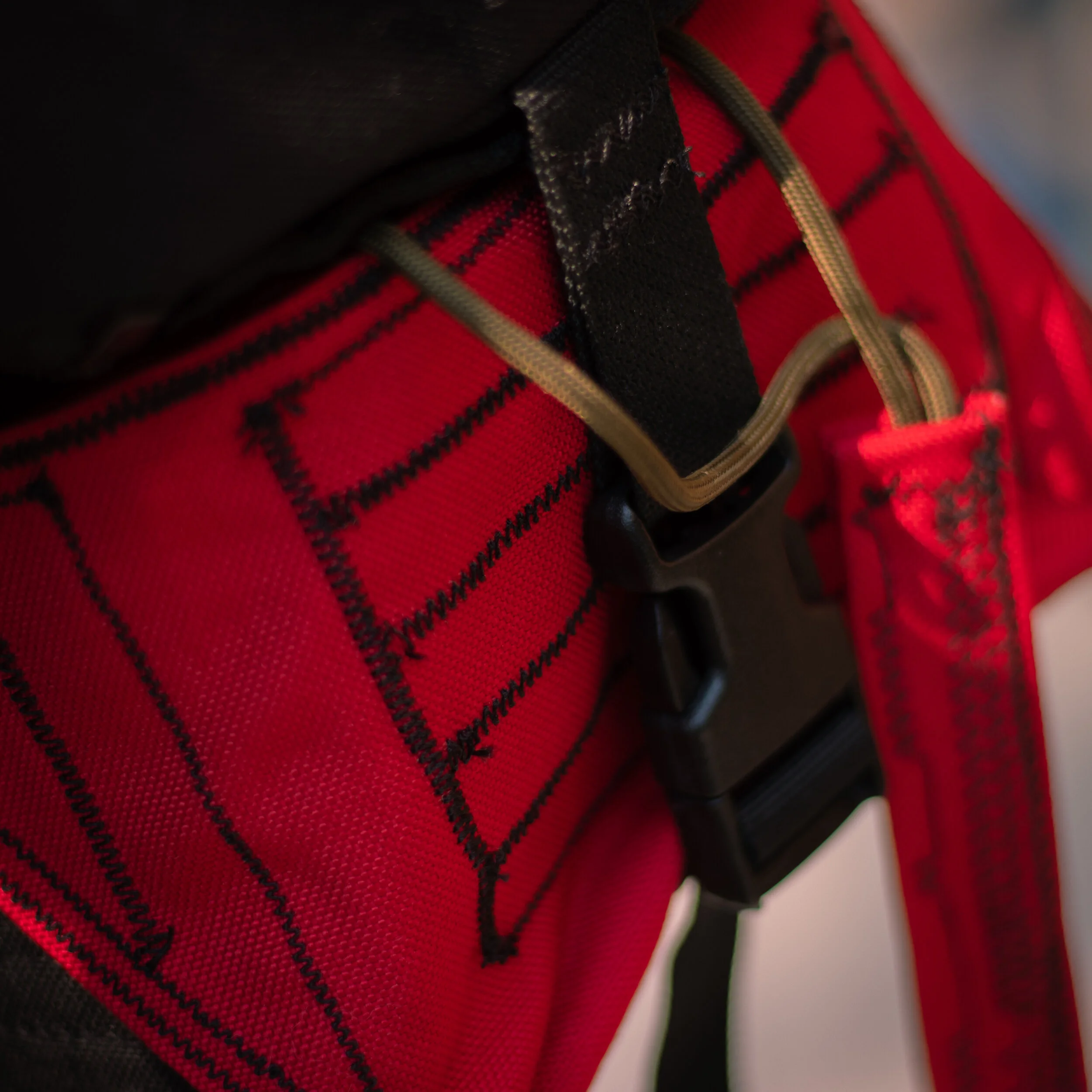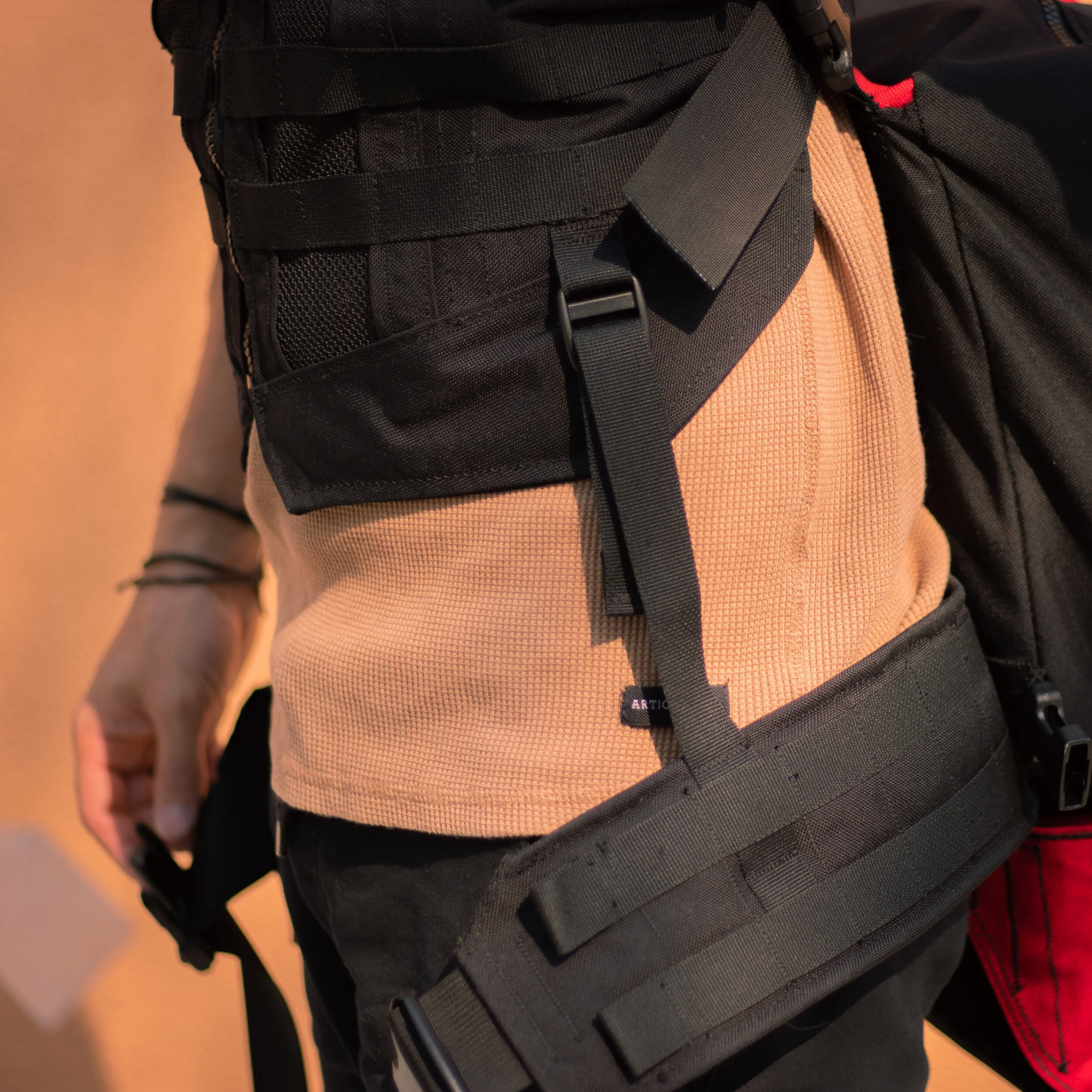Fire Fighting Vest
The client approached Snoape after being intrigued by one of our snowboarding vests, seeking a harness solution that could offer greater functionality for carrying equipment in demanding environments, such as firefighting.
We began by identifying the specific challenges they faced. While durability and comfort were essential, modularity played a significant role in enhancing the harness’s functionality. The design was influenced by the principles of existing belt rig systems, but we wanted to take those ideas further by incorporating flexibility into the harness. This approach allowed the chest rig to be decoupled from the belt rig, giving users the freedom to adapt the setup to their immediate needs.
To ensure versatility in different scenarios, the belt rig was made height adjustable, allowing the wearer to adjust the center of gravity for improved balance in various actions, such as climbing or crouching. This adaptability was key to enhancing user performance in dynamic environments.
One of the standout features was the development of a quick-release system for the fire shelter, designed to be deployed in under 15 seconds—a significant improvement compared to the average deployment time, which previously ranged between one to two minutes. This innovation provided a critical edge in life-threatening situations, drastically reducing response time.
Material selection was crucial in achieving the necessary resilience. We used Cordura D600 and D1000 nylon, chosen for their fire-resistant and abrasion-resistant properties. These durable materials are widely recognized for their use in military applications, ensuring the harness could withstand extreme conditions while remaining lightweight and comfortable.
Though I worked independently on this project, the design process followed an intensive, user-centered approach, involving hands-on prototyping and user feedback. The prototyping phase allowed for real-world testing, ensuring that each iteration addressed new challenges and opportunities for improvement. This iterative process was essential for refining both functionality and user experience.

























